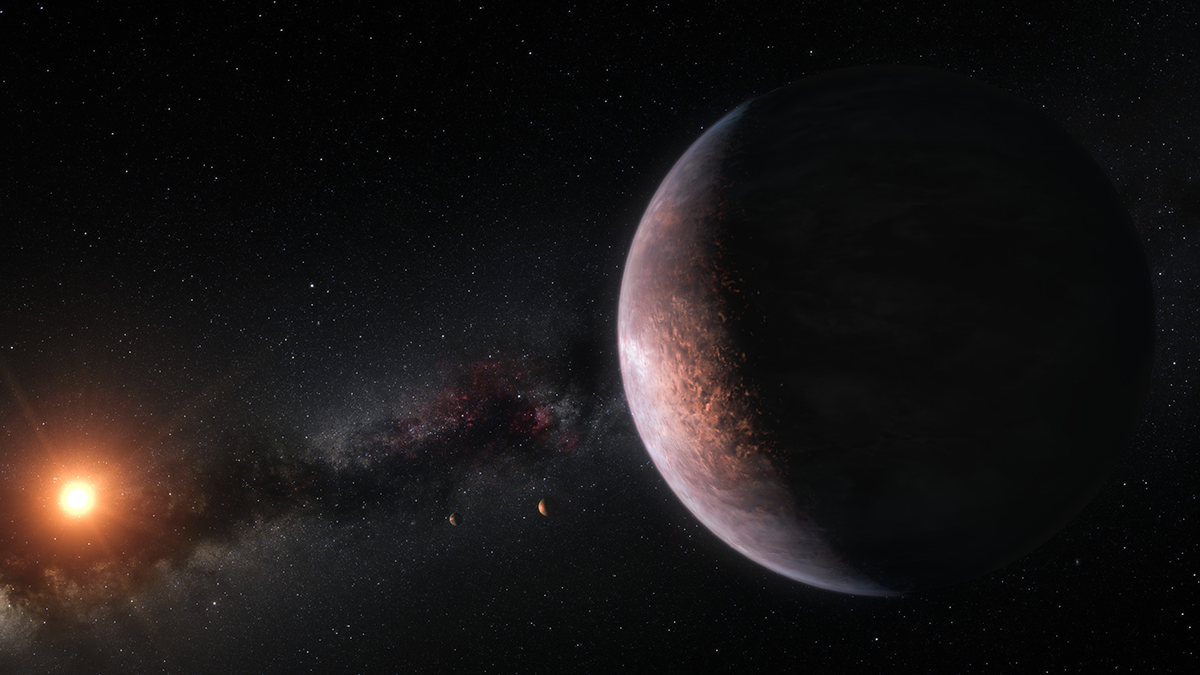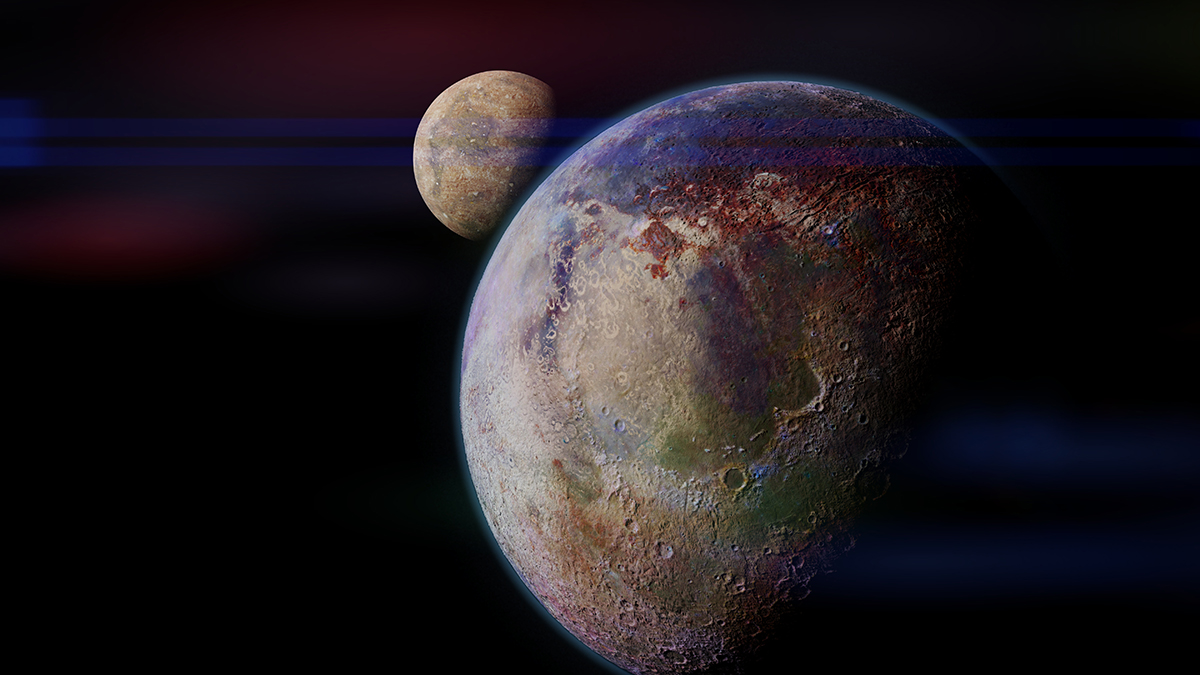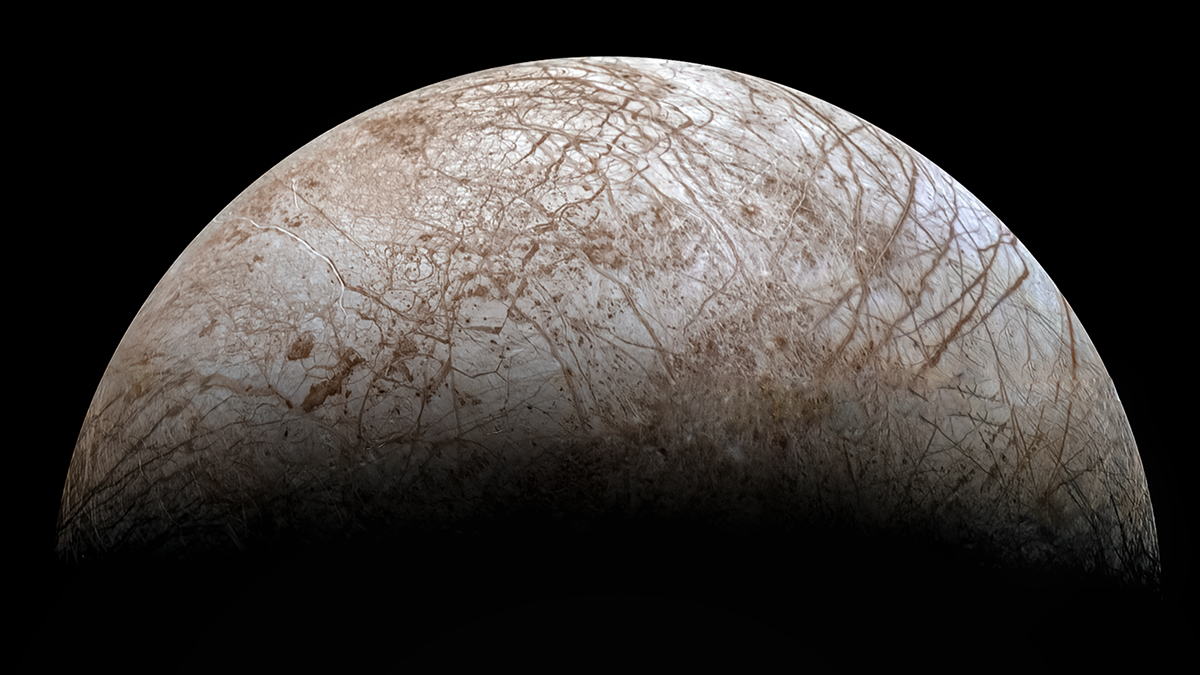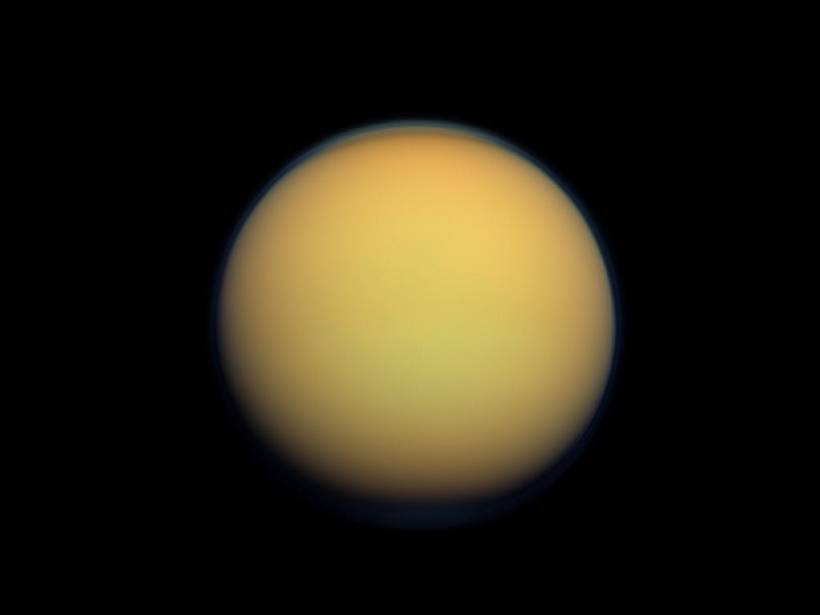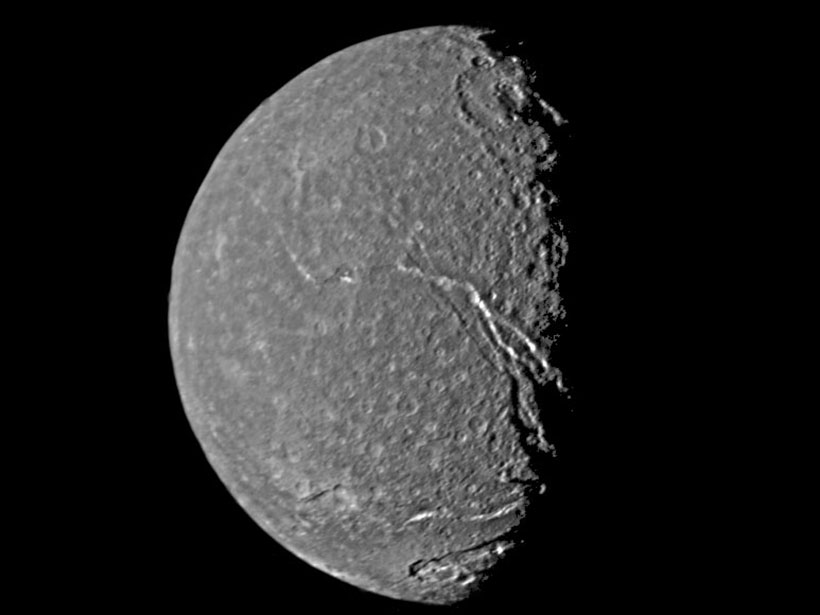Tidally locked planets always present the same face to their host stars. What does this mean for their potential to support life?
moons
To Make a Big Moon, Start with a Small Planet
Why is our Moon so massive compared with Earth, and how might that configuration happen elsewhere?
Where Moons Are Made
The young, growing planet PDS 70 c has enough material swirling around it to make at least three Moon-sized moons.
A Window into the Weather on Titan
Cassini’s final flybys of Saturn’s largest moon may have captured a temperature drop due to rainfall, one of the first observations of weather changes on Titan.
Do Uranus’s Moons Have Subsurface Oceans?
Scientists tested whether a classic technique could detect subsurface oceans on the moons of Uranus. In this scenario, the planet’s oddball magnetic field offers a big advantage.
Planetary Cave Exploration Progresses
Terrestrial caves offer scientific and engineering insights and serve as testing grounds for future forays by humans and robots into caves on other worlds.
On Thin Ice: Tiger Stripes on Enceladus
Saturn’s moon Enceladus boasts fierce tiger stripes around its south pole, a mystery that has long puzzled scientists. New research explores the stripes by examining how the moon’s ice breaks.
Jupiter’s Ocean Moons Raise Tidal Waves on One Another
New research considers the effect of Jupiter’s Galilean moons on each other’s oceans for the first time.
Electron Density near Enceladus Shows Orbital Variation
The electron density peaks well after the activity of the moon’s distinctive south polar ice plume reaches its maximum, but the cause of the lag remains puzzling.

